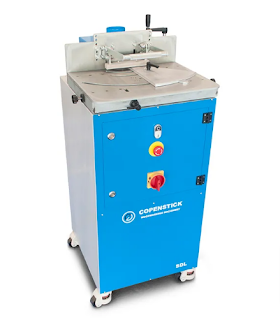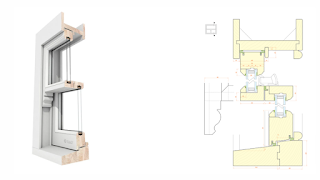A Guide to Choose End-Scribing for Simulated Divided Lights and Stormproof Casement Timber Window Tooling
Many homeowners may not be familiar with the term "divided light." However, they are very common. You may have seen them in your home before, or you may even have had them installed in your home. Here at Copenstick, we’re going to take a look at End-Scribing for Simulated Divided Lights, common window terms, and definitions.
We’re also going to look at how to select true or simulated divided-light window options for your home, as well as reveal how specific types of divided light respond to certain architectural design styles. “Divided light” is the name given to a type of window where the glass panels are divided into several smaller components. These components are known as dividers or grids. The light is only used for aesthetics. This creates a more three-dimensional effect compared to real muntins on the street.
Why choose End-Scribing for Simulated Divided Lights?
Authenticity
End-Scribing for Simulated Divided Lights help preserve the authenticity of older buildings by closely mimicking the construction methods of the window's original divided-light design.
Authenticity
This light is easier to maintain than other methods, as it creates tight joints that reduce the chance of dirt or moisture buildup and makes cleaning and maintenance easier.
Improved Insulation and Weatherproofing
The quality of the finished window can also be improved by properly joining muntins together, which can reduce the risk of gaps or misalignment that can occur when other joining methods are used.
Aesthetics
The window can also be better insulated and weatherproofed, which can help improve energy efficiency and prevent drafts, especially in areas with extreme weather.
Durability
The finished window will look more aesthetically pleasing due to the tight joints that are created.
What Do You Aspect from Stormproof Casement Timber Window Tooling?
Stormproof Casement Timber Window Tooling is one of the most popular window styles in the UK and, surprise, surprise; it’s actually an architectural feature that’s been around for a lot longer than the traditional sliding sash windows. They’re loved for their efficient ventillation through traditional side-hinging positioning, as well as their adaptability and ability to adapt to any property, whether it’s to soak up country views, add a feature to a new modern home or keep character in an old or period home.
Flush casements are a more traditional style that’s often used in home renovations, where a hint of heritage is often preferred. However, we can fit both styles to any property. If you’re looking to replace an older casement window with a new one that’s an exact replica or just want to change the style, we’ve got you covered.
As specialists in the design, manufacture and installation of beautiful timber windows and doors, we’re proud to be able to install windows and doors for all types of properties. The following are some advantages of Stormproof Casement Timber Window Tooling for homeowners:
Superior thermal economy
Adequate ventilation
An excellent aesthetic
House safety
Flexibility




Comments
Post a Comment